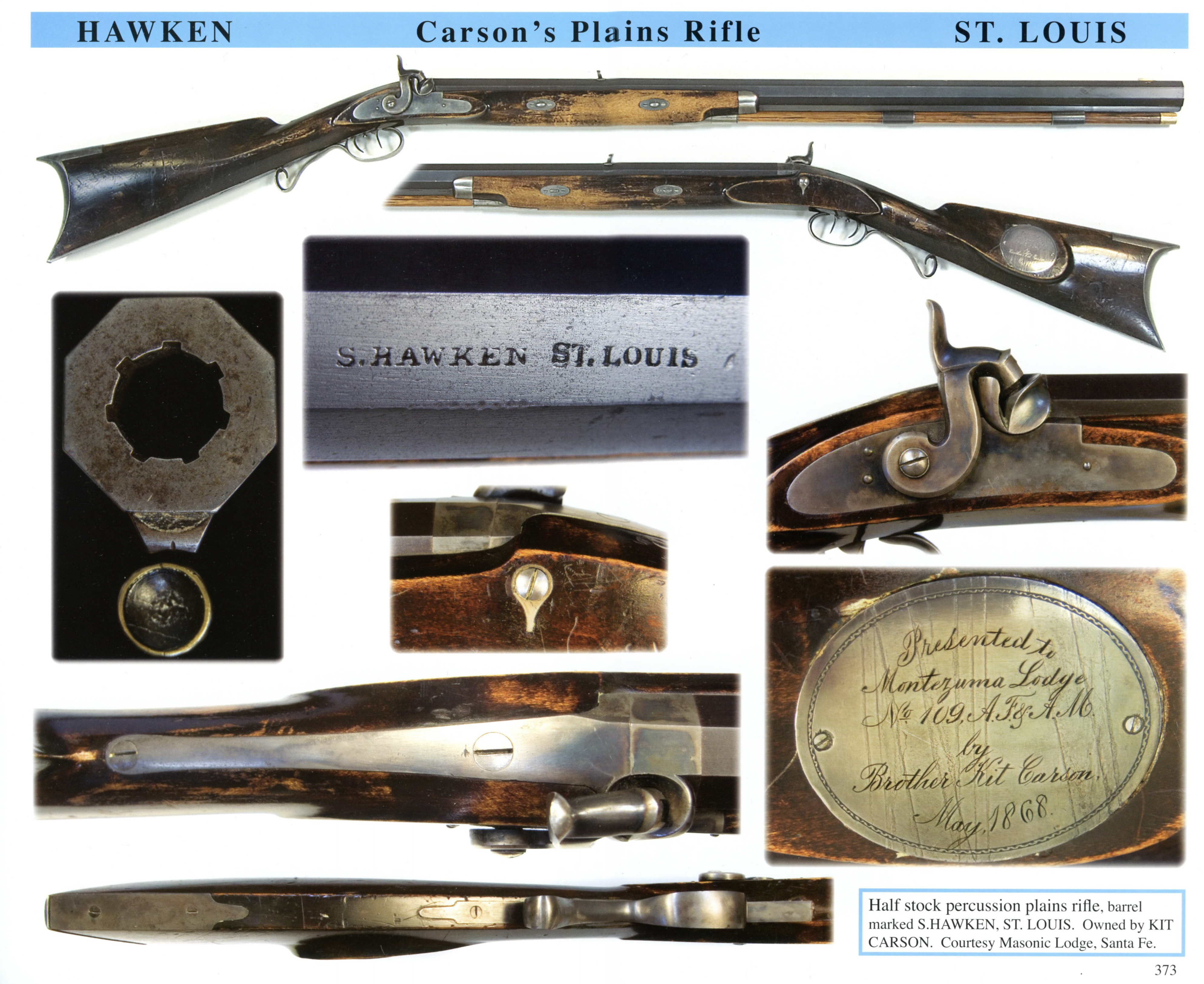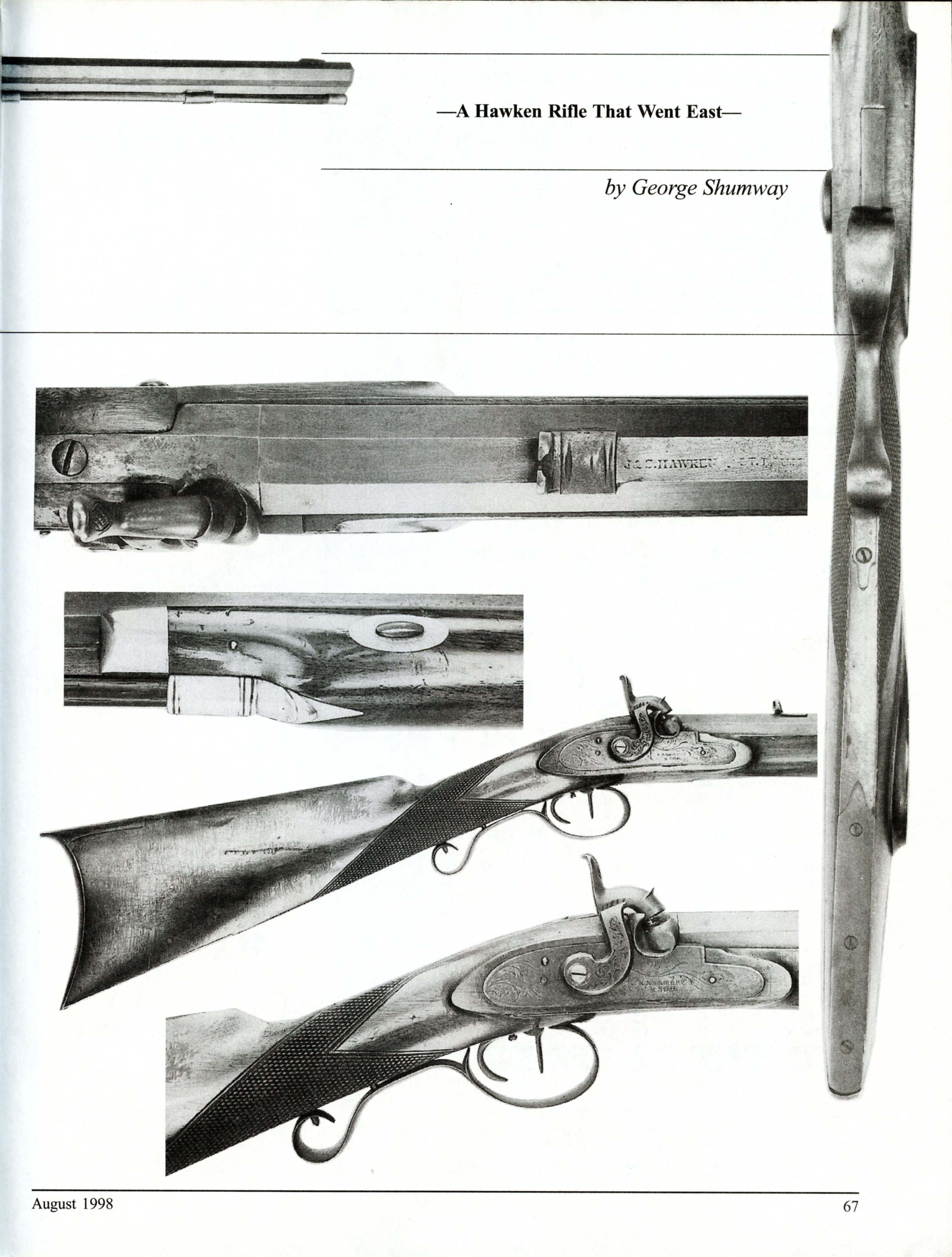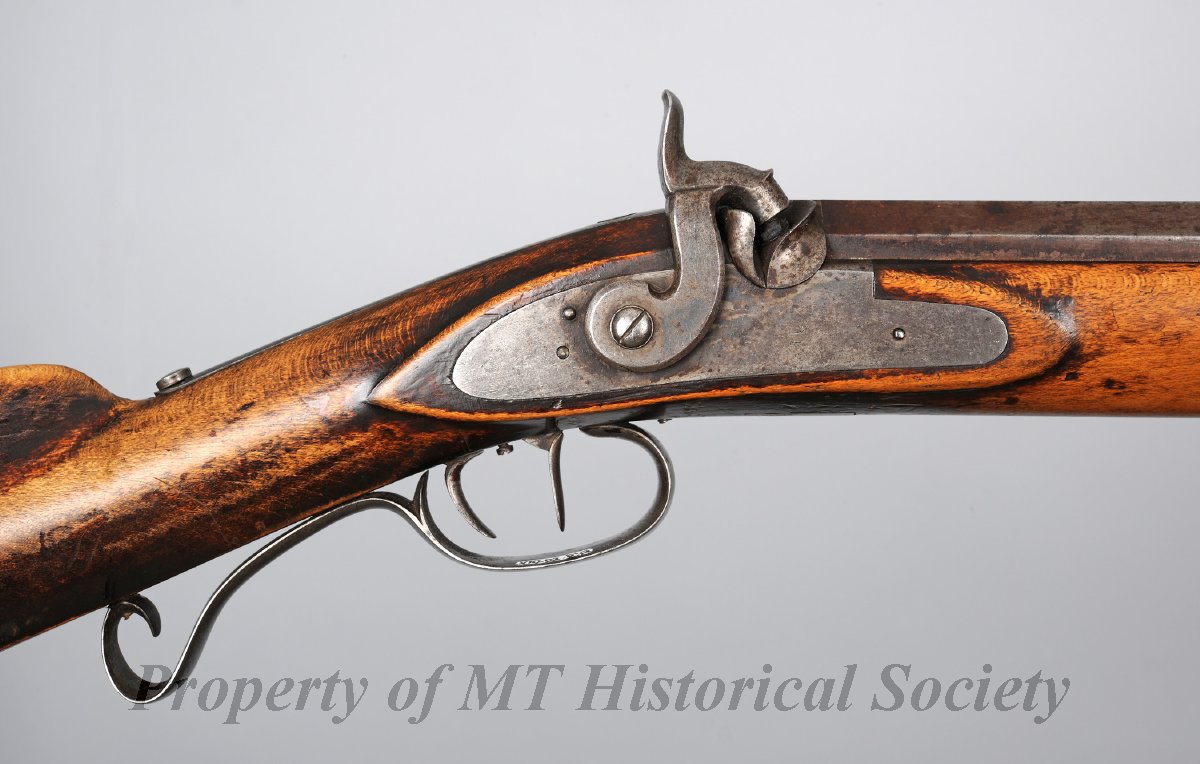The barrels of rifles from the Hawken Shop in St. Louis would have been blued. The lock plate, trigger guard and butt plate would be color case hardened.
Yes, the modern salt blue wasn’t around yet. Rust blue generally has a satin or egg shell shine rather then a high polish buffed look of today’s guns. The breech was also color cased to give a corrosion resistance to it. There’s some good pictures of at least one Hawkins mountain rifle that shows this well.
Grenadier1758 and
Phil Coffins have provided accurate answers as far as we know. I've learned from several years of studying Hawken rifles that it is dangerous to make hard, fast statements concerning Hawken rifles, though. There's often an exception to any rule one might come up with.
The problem with "knowing" how the Hawken brothers finished their rifles is that there are so few surviving rifles that exhibit their original finish. To extrapolate that small sampling to all the rifles they made is not sound reasoning. A statistician would say that our sampling is statistically insignificant as regards to the whole population.
I was fortunate to be able to examine and photograph the Kit Carson Hawken in the Masonic Lodge in Santa Fe last month. It's an amazing rifle and probably the best preserved S. Hawken rifle extant. Much of the original finish can still be seen on the metal parts and the wood. It probably dates to about 1855 plus or minus, and represents the zenith of the Hawken rifle development. Here is a picture of it from Jim Gordon's book. (I haven't fully edited the photos I took and may post some of them at a later date.)

We don't know when Carson acquired this rifle. We do know that he owned other Hawken rifles before this and that this one is his last. He was stationed at Fort Garland in 1866 and part of '67 as his last assignment in military service, but that came to an end in the fall of 1867 when the New Mexico volunteers were disbanded. He apparently left his Hawken rifle at Fort Garland while he pursued other employment. He eventually relocated his family from Taos to Colorado near Fort Lyon and was asked by the government to accompany a group of Ute Indians to Washington, DC. While at Fort Lyon, Carson was diagnosed with an aneurysm of the aorta and did not have long to live. He traveled back East anyway. His health continued to decline, and he barely made it back to Colorado and his wife to be present for the birth of their eighth child, a daughter. Two weeks later, Josefa, his wife, died of complications following the birth. Less than a month later, Carson died at Fort Lyon.
He did not have an opportunity to go back to Fort Garland and reclaim his rifle. Following his death, the commander of Fort Garland had Carson's Hawken sent to the Masonic Lodge and given to the members in 1868. It has been in possession of the Lodge since then and protected from the elements.
Considering that it is about 165 years old, it is in amazing condition. The color case hardening is surprisingly vivid on the lock, the breech & tang, and the trigger plate. Though more worn, it is evident on the trigger guard, the butt plate, the nose cap, and possibly the toe plate. The entry pipe and the barrel wedge escutcheons had the finish worn off them, so I don't know for sure how they were finished--probably blued. The barrel, rib, and forward pipes are blue. I agree with Phil Coffins that the blueing would be what we call "rust blue".
The three most common processes for bluing firearms in this period were (1) temper bluing, (2) charcoal bluing, and (3) rust bluing. Temper bluing was common on European guns and can result in the most intense blue, but isn't very durable. Charcoal bluing as demonstrated by
Jack Brooks is a more durable finish, but it's not as uniform. Rust bluing is both durable and uniform in color and appearance. The barrel on the Carson Hawken best matched the characteristics of rust bluing.
There are a few other Hawken rifles that still show traces case hardening colors. The Jim Bridger Hawken in the Montana Historical Society is one.
The Museum of the Fur Trade has another S. Hawken rifle that still shows color on the breech plug.
But what about during the J&S Hawken period? Don Stith once owned a pre-1840 J&S Hawken that George Shumway included in his "Longrifles of Note" column in the August 1998 issue of
Muzzle Blasts. It's been well preserved and retains much of its original finish. Again, the lock, breech & tang, and the rest of the iron furniture is color case hardened while the barrel is blue.

An invoice found in the AFC records for goods sent to the 1834 rendezvous lists "6 steel mounted rifles, Hawken,” at $20 each and “10 steel mounted rifles,” at $17.50 each. The latter are probably some of the "steel" mounted American pattern rifles that the AFC ordered from JJ Henry based on the listed price. It's interesting that the records used the word "steel" to describe the mounts on both the Hawken rifles and the Henry rifles. Steel was expensive at this time and the only parts made of steel on a rifle were the springs in the locks. The rest were made of wrought iron. Did the clerks mistakenly use the word steel when they meant iron? Seems odd that they would, because it was used by clerks in New York as well as in St. Louis pertaining to some of the same rifles. Could the choice of the word "steel" meant case hardened iron?
It was standard practice to case harden the iron lock parts to make them wear resistant. Percussion breech plugs were likely case hardened because it made them resistant to erosion and corrosion. Case hardening the iron butt plate, trigger plate, and trigger guard would offer more wear resistance to those parts, also.
So we have a few surviving Hawken rifles with color case hardened mounts and blue barrels and possibly a period reference to "steel" or case hardened mounts. Would the few thousand rifles the Hawken brothers made be finished like these handful of rifles? Maybe, maybe not.
To rust blue a barrel, they would have first browned it. Whose to say that on some, they stopped at the browning step.
Surviving records of fur companies, Hudson Bay Co., American Fur Co., Pierre Chouteau Jr & Co., and the Ewing Brothers, show that trade guns and rifles were ordered with barrels in the bright, blue, and brown. It seems their customers preferred to have some choice in not only caliber and barrel length, but also in appearance.
Perhaps some of the Hawken customers did too.








